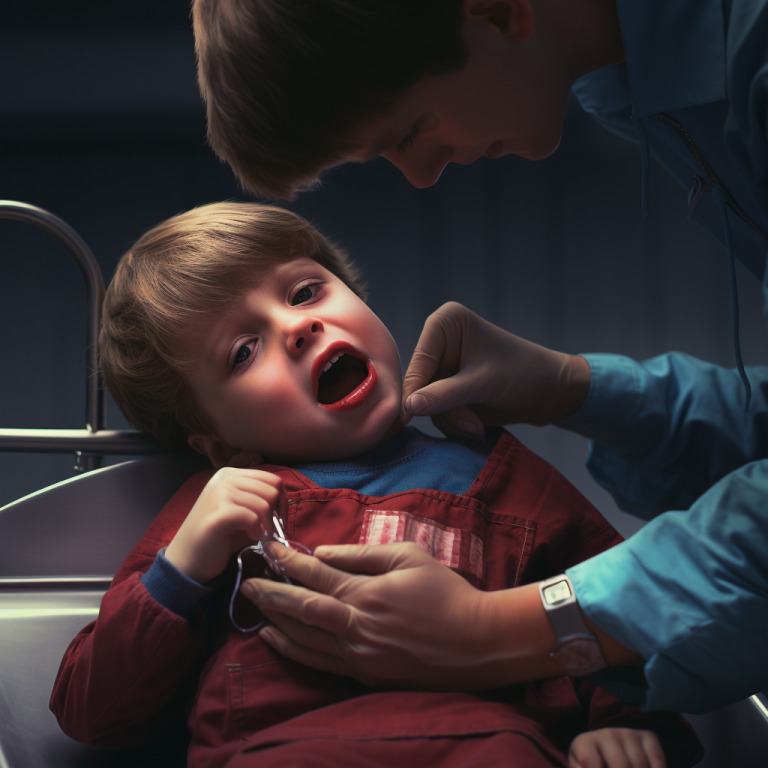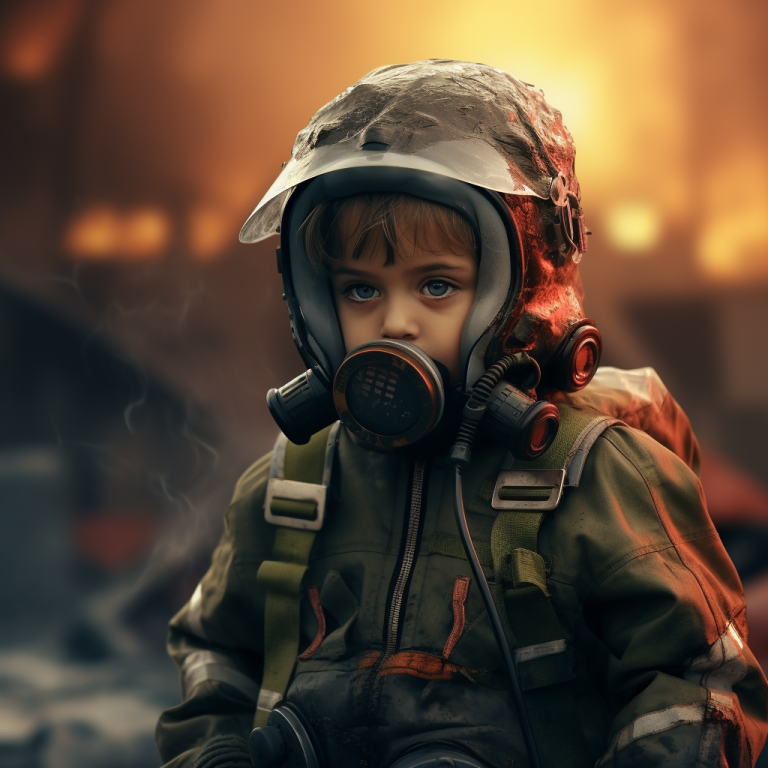Depending on the strength of the current and the duration of exposure, the consequences of an electrical accident can vary.
Contact with electricity can lead to shortness of breath, chest spasms, anxiety, restlessness, and sweating. These symptoms often subside after the event.
With higher current intensities, burns to the skin can also occur.
Muscle spasms may prevent the child from releasing themselves from the electrical source.
If the current flows through the heart, it can lead to arrhythmias, including ventricular fibrillation, even several hours after the incident.
Actions:
Ensure your own safety
You can only help if you do not come into contact with the electricity.
- Interrupt the electrical circuit by pulling the plug or switching off the fuse (e.g., activating the residual current device, RCD).
- If this is not possible, pull or push the child away from the electrical source. Do not touch the child directly.
- Use an insulating object made of wood, rubber, or leather, such as a broomstick, belt, or chair.
- Ensure that you are not standing on conductive materials; stand on a thick newspaper or wear shoes with rubber soles.
Check immediately whether the child is conscious and breathing.
- If the child is not breathing, start CPR (Cardiopulmonary Resuscitation).
- Call emergency services (112) immediately.
- If the child has a burn injury, cover it with a sterile dressing.
- Even if the child shows no immediate signs of injury, they should always be taken to the hospital for monitoring after an electric shock.







